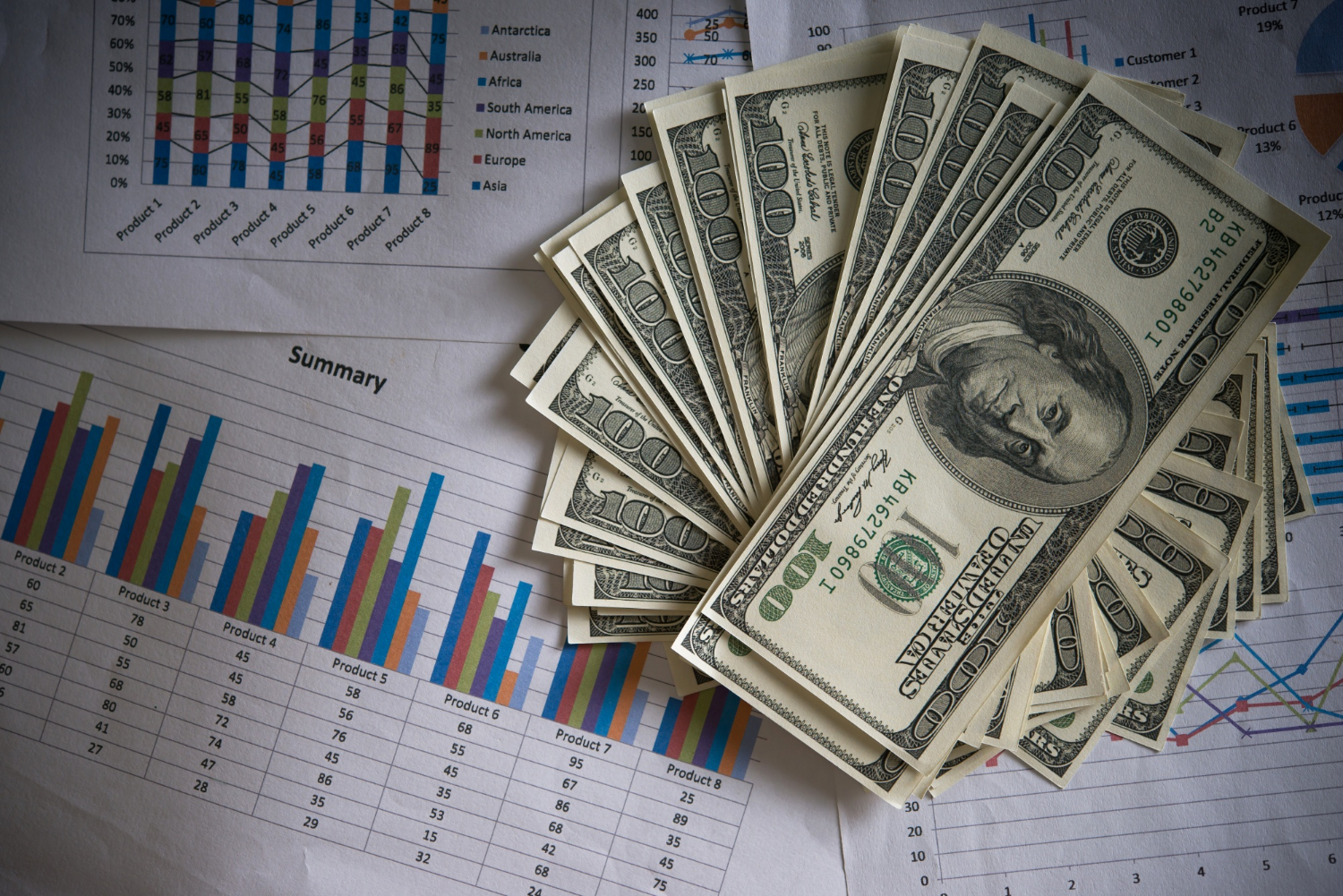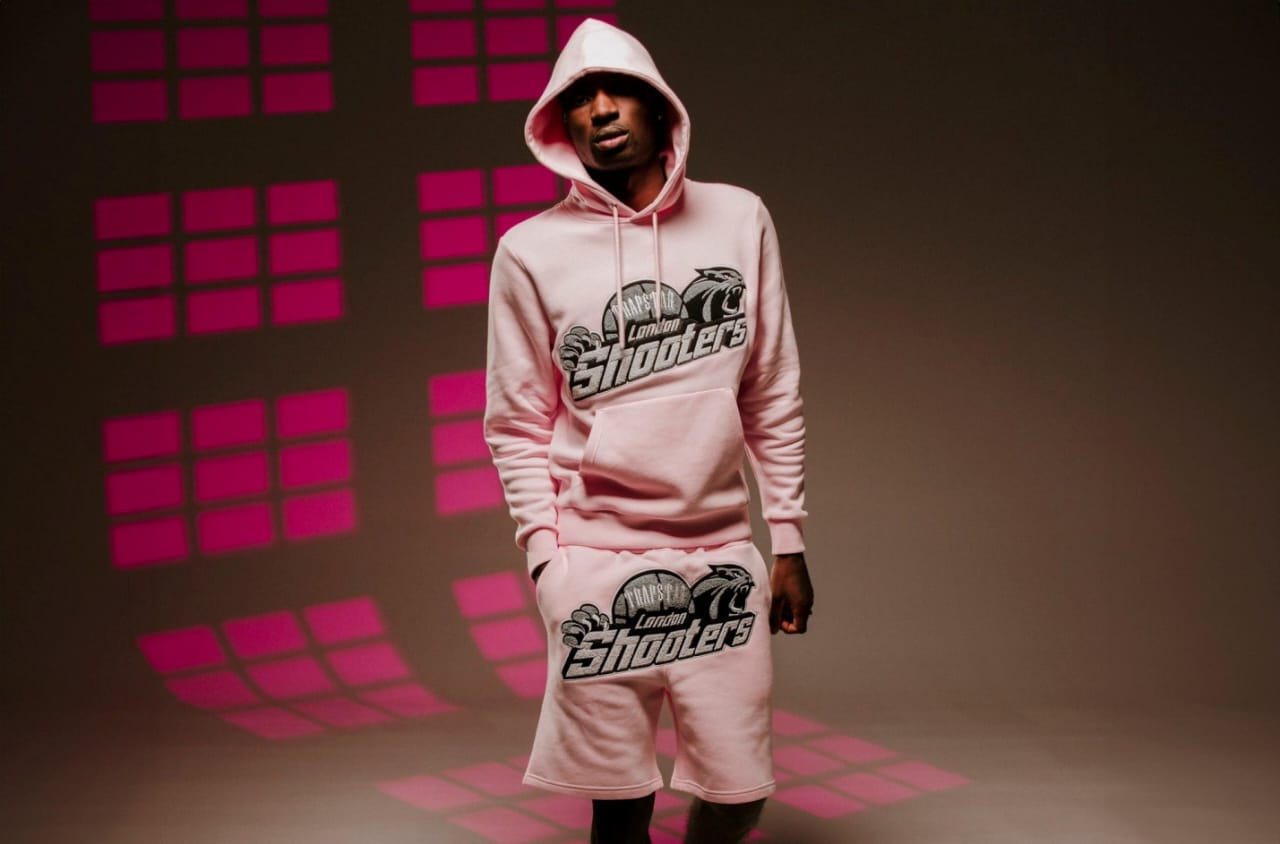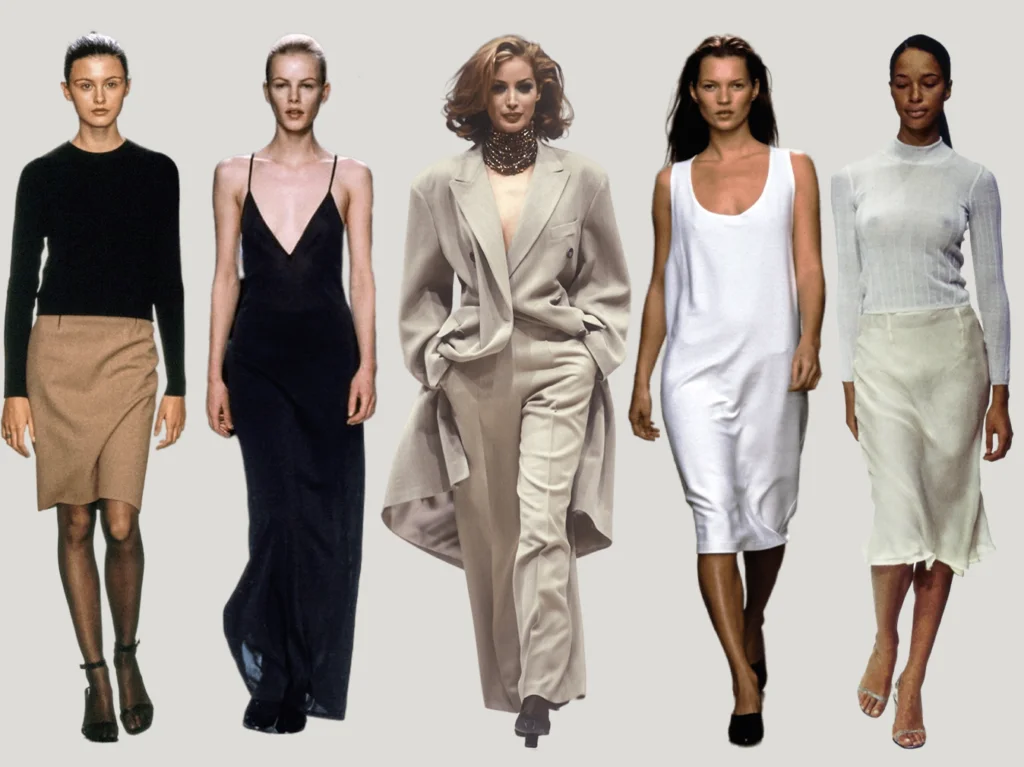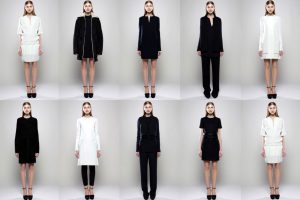Fashion
Sustainable Investing: The Expansion of Green Finance

Sustainable investing is becoming one of the most influential trends in finance, reshaping the way businesses and individuals approach investment strategies. As concerns about climate change, social responsibility, and ethical governance rise, so too does the interest in green finance and sustainability-focused investments. This article will explore the evolution of sustainable investing, the growth of green finance, and the benefits and challenges of this movement.
What is Sustainable Investing?
Sustainable investing is the practice of incorporating environmental, social, and governance (ESG) factors into investment decisions. Investors who adopt this approach look beyond financial returns and consider the broader impact of their investments on society and the environment. This strategy aims to generate positive, long-term outcomes while fostering sustainable practices within industries and communities.
Sustainable investing can take various forms, including:
- ESG Integration: Incorporating ESG factors into traditional financial analysis.
- Socially Responsible Investing (SRI): Excluding investments in companies or industries that don’t align with ethical values (e.g., fossil fuels or tobacco).
- Impact Investing: Directly investing in companies or projects that address specific social or environmental challenges.
- Green Bonds: Bonds specifically issued to fund environmentally-friendly projects.
The Evolution of Sustainable Investing
Sustainable investing is not a new concept, but it has gained significant momentum in recent years. Initially, many viewed it as a niche or ethical investment strategy. However, it has evolved into a mainstream approach driven by both market forces and regulatory pressures.
The roots of sustainable investing can be traced back to the 1960s when socially responsible investing emerged, particularly during movements related to civil rights, anti-apartheid, and environmental protection. Since then, the focus has shifted to addressing broader issues such as climate change, diversity and inclusion, and corporate governance.
In the last decade, the rise of sustainability concerns, especially related to climate change, has made green finance and sustainable investing a priority for both private investors and governments. The growth of renewable energy, technological innovation, and climate policies are now key drivers in pushing ESG-focused investments to the forefront of global finance.
The Growth of Green Finance

Green finance refers to the financing of projects that have a positive environmental impact. It includes a wide range of financial instruments and services designed to support the transition to a low-carbon, sustainable economy. Green finance is at the heart of the sustainable investing movement, allowing investors to fund projects that address environmental challenges.
Key Components of Green Finance:
- Green Bonds: These bonds are issued specifically to finance environmental projects, such as renewable energy, clean transportation, and waste management. The green bond market has exploded in recent years, reaching nearly $500 billion globally by 2023.
- Green Loans: Similar to green bonds, green loans are provided to fund environmentally beneficial projects. Green loans often come with interest rates tied to the borrower’s sustainability performance.
- Sustainable Funds: These are investment funds that prioritize companies or projects meeting specific ESG criteria. They focus on industries like renewable energy, water conservation, or sustainable agriculture.
- Carbon Credits and Markets: Investors can also engage in carbon markets, where companies trade carbon emission allowances, thereby incentivizing reductions in greenhouse gas emissions.
The global transition to a low-carbon economy requires massive investments in infrastructure, innovation, and technology. Green finance is essential in mobilizing these resources.
Benefits of Sustainable Investing
Sustainable investing offers several benefits to both investors and society as a whole. These include:
1. Financial Returns with Purpose
Many studies have shown that companies with strong ESG credentials often outperform their non-ESG peers over the long term. This is because sustainable companies tend to have better risk management practices, more engaged stakeholders, and are more resilient to economic shocks. As a result, sustainable investing allows investors to align their financial goals with their ethical beliefs without sacrificing returns.
2. Positive Environmental and Social Impact
By investing in companies or projects that prioritize sustainability, investors can contribute to the global fight against climate change, social inequality, and other pressing challenges. For instance, by investing in renewable energy companies, investors can help reduce global dependence on fossil fuels.
3. Risk Mitigation
ESG factors are increasingly seen as essential risk indicators. For example, companies that ignore climate-related risks may face operational disruptions or regulatory penalties in the future. Incorporating ESG factors into investment decisions helps investors avoid these risks and ensures more stable, long-term growth.
4. Regulatory Support
Governments and international organizations are increasingly supporting sustainable investing and green finance through policies and incentives. For instance, the European Union’s Green Deal aims to make Europe the first climate-neutral continent by 2050, encouraging the growth of sustainable finance.
Challenges of Sustainable Investing
Despite the growth of green finance and sustainable investing, several challenges remain.
1. Greenwashing
Greenwashing refers to the practice of misleading investors by exaggerating the sustainability credentials of a product, service, or company. Some businesses falsely claim to be environmentally friendly to attract investors, which undermines the integrity of sustainable investing.
2. Lack of Standardization
There is currently no universally accepted framework for evaluating and reporting ESG performance. This makes it difficult for investors to compare different investments and assess their true sustainability.
3. Limited Investment Opportunities
Although the sustainable investment universe is growing, it still represents a smaller portion of the overall market. Investors may find it challenging to identify sufficient opportunities that align with their ESG values, especially in certain regions or industries.
4. Short-Term Focus
Some investors may still be more concerned with short-term gains rather than the long-term benefits of sustainable investing. Convincing traditional investors to adopt a more patient, long-term approach can be difficult.
The Future of Sustainable Investing
The future of sustainable investing looks bright. As global awareness of climate change and social justice continues to grow, more individuals, institutions, and governments are likely to adopt sustainable investing strategies. The demand for green finance will likely continue to increase as new technologies, policies, and business models emerge.
Moreover, technological advancements in areas like renewable energy, electric vehicles, and carbon capture will create new investment opportunities. Financial innovation, such as green fintech solutions, will also make sustainable investing more accessible to everyday investors.
Comparative Table: Sustainable Investing vs. Traditional Investing
| Feature | Sustainable Investing | Traditional Investing |
|---|---|---|
| Focus | Financial returns + ESG factors | Financial returns only |
| Risk Management | Considers environmental, social, and governance risks | Focuses on market and financial risks |
| Long-Term Outlook | Prioritizes long-term sustainability | Can have a short-term focus |
| Ethical Alignment | Aligns with investors’ ethical and social values | May not consider ethics |
| Market Size | Growing rapidly, still smaller than traditional finance | Large and well-established |
| Regulatory Support | Increasingly supported by governments and policies | May face new regulations on ESG and sustainability reporting |
Analysis Table: Key Growth Drivers in Sustainable Investing
| Driver | Description | Impact on Growth |
|---|---|---|
| Climate Change Awareness | Rising global concerns about climate and environmental risks | Increasing investor demand for sustainable investments |
| Government Policies | Regulatory support such as the Paris Agreement and EU Green Deal | Encourages growth in green finance and sustainable industries |
| Corporate ESG Adoption | More companies adopting ESG practices | Greater availability of sustainable investment options |
| Technological Innovation | Advances in clean energy, electric vehicles, and green tech | Creates new investment opportunities |
| Investor Demand | Growing consumer and institutional interest in ethical investing | More capital directed toward sustainable funds |
Conclusion
Sustainable investing and green finance represent a significant shift in the financial world. As the world moves toward a more sustainable future, investors are increasingly integrating ESG factors into their strategies to align financial returns with broader societal goals. The growth of green finance provides opportunities to fund projects that address critical environmental challenges, but challenges like greenwashing and a lack of standardization must be addressed. Overall, the future of sustainable investing looks promising as it continues to gain traction across the globe.
Fashion
Trapstar: The London Streetwear Brand That Redefined Urban Fashion

Introduction
Streetwear isn’t just about clothes it’s about energy, attitude, and authenticity. Among the names that have shaped this culture, Trapstar stands tall as one of the most influential. Born in the heart of London, this brand grew from a small, underground movement to a globally recognized powerhouse in urban fashion.
Trapstar started with humble beginnings. What began as a few friends printing logos on t-shirts and hoodies quickly turned into a fashion revolution. Their early work was raw and unfiltered, inspired by street music, London’s nightlife, and the pulse of the city’s youth. Unlike traditional fashion houses, Trapstar didn’t rely on glossy marketing or celebrity endorsements in the beginning — their community built their name.
Over the years, what was once an underground brand started appearing on celebrities, musicians, and athletes worldwide. Today, Trapstar stands as a symbol of confidence and individuality representing not just fashion, but a mindset that refuses to blend in.
Trapstar Style: More Than Just Clothing
Trapstar isn’t just a brand; it’s an identity. When people wear Trapstar, they’re not just showing off a logo — they’re expressing an entire lifestyle. The brand’s aesthetic is rooted in the streets but refined enough to cross over into mainstream fashion.
From T-shirts and hoodies to outerwear and accessories, Trapstar captures the perfect balance between raw energy and high-end design. The use of bold fonts, graphic prints, and monochrome palettes gives the brand its instantly recognizable edge. Yet, what truly makes Trapstar special is its storytelling every collection carries a message or a hidden meaning, creating a deeper connection with the audience.
The label’s commitment to limited runs and exclusive collections adds to its mystique. Owning a piece of Trapstar isn’t just about style it’s about belonging to a movement that values creativity, rebellion, and individuality.
The Signature Trapstar Tracksuit: Streetwear’s Statement Piece

Image by: Yandex.com
Among all the pieces that the brand has released, the Trapstar tracksuit holds a special place in the streetwear world. It’s more than just a matching set of jacket and pants it’s a cultural symbol.
Its versatility is what makes it iconic. You can wear it casually on the streets, style it with sneakers for an effortless vibe, or even layer it with a Trapstar jacket for colder days. Each version whether in classic black, grey, or limited-edition prints — carries the same essence: confidence and power.
The Trapstar tracksuit also reflects the brand’s connection with music culture. Rappers, grime artists, and hip-hop icons have embraced the look, turning it into a street anthem. When you see someone in a Trapstar set, you know they’re representing more than fashion they’re showing love to a legacy built on determination and creativity.
Trapstar Jackets: Crafting Bold Outerwear with Purpose
No Trapstar collection would be complete without the brand’s signature Trapstar jacket. Known for its cutting-edge design, durable materials, and attention to detail, each jacket tells a story of rebellion and pride.
The design philosophy behind Trapstar jackets is simple: functional, fearless, and fashionable. Whether it’s a padded bomber, a sleek windbreaker, or a heavyweight parka, the craftsmanship remains top-tier. The brand focuses on creating outerwear that stands out while providing real comfort and performance.
One of the most popular designs, the Irongate jacket, perfectly captures Trapstar’s identity. It features bold graphics and intricate details that instantly make it recognizable. Worn by musicians and fans alike, it’s a piece that represents power and individuality two traits that define the entire Trapstar ethos.
Collaborations and Celebrity Influence
Trapstar’s rise to fame didn’t happen in isolation. The brand’s collaborations and celebrity endorsements have played a massive role in cementing its reputation. Over the years, Trapstar has partnered with names like Puma and Roc Nation collaborations that helped merge fashion, music, and culture in one powerful movement.
High-profile artists such as Rihanna, A$AP Rocky, Jay-Z, and Stormzy have all been seen rocking Trapstar apparel, giving it global exposure. These connections aren’t just marketing strategies; they represent a mutual respect between creative forces. Musicians and fashion icons are naturally drawn to Trapstar’s authentic energy, which mirrors the same passion they bring to their craft.
The brand’s ability to stay relevant while maintaining exclusivity is part of its genius. Unlike many labels that flood the market, Trapstar keeps its drops limited, ensuring that every piece retains its desirability. This scarcity model fuels anticipation when a new Trapstar release drops, it instantly becomes a talking point across social media and streetwear communities.
Conclusion: Trapstar Built for the Bold
Trapstar isn’t just about fabric and design it’s about attitude, self-belief, and power. From underground London streets to global fashion runways, the brand has never lost touch with its roots. It continues to inspire those who dare to be different and speak through style.
Whether you’re wearing a Trapstar tracksuit for comfort or a Trapstar jacket to make a statement, you’re representing a legacy of creativity and resilience. Trapstar’s story proves that true fashion doesn’t come from following rules — it comes from breaking them.
Fashion
GV Gallery | Minimalist Fashion for Timeless Style | Shop Now

Introduction
In the world of fashion, trends come and go, but true style never fades. If you’re someone who appreciates clean lines, versatile pieces, and the elegance of simplicity, GV Gallery is the brand you need to explore. Known for its minimalist approach to fashion, GV Gallery offers a stunning collection that allows you to build a timeless wardrobe with ease. Whether you’re looking to update your everyday look or searching for pieces that transcend seasons, the minimalist designs at GV Gallery make dressing effortlessly chic.
In this article, we’ll dive into what makes GV Gallery a must-visit destination for minimalist fashion lovers. From the philosophy behind their designs to the types of pieces they offer, we’ll explore why minimalist fashion is a timeless style choice that’s here to stay. Ready to discover your next wardrobe staple? Let’s get started!
The Allure of Minimalist Fashion
Minimalist fashion isn’t just a trend; it’s a lifestyle. It’s about embracing fewer, but higher-quality pieces that stand the test of time. Unlike fast fashion, which constantly churns out seasonal trends, minimalist fashion focuses on simplicity and longevity. At its core, minimalist fashion celebrates the art of less—fewer items, but each one serving a purpose and making a statement.
GV Gallery understands this concept, and they’ve built their brand around it. Their minimalist designs aren’t just about reducing the clutter; they’re about focusing on the details that truly matter. Each piece is carefully crafted to ensure it fits seamlessly into your wardrobe, whether you’re dressing up for a formal event or keeping it casual for a weekend outing.
Why Choose GV Gallery for Minimalist Fashion?

Image by: Yandex.com
There are countless fashion brands out there, but GV Gallery stands apart due to its unique approach to minimalist style. Here’s why it should be at the top of your shopping list:
1. Timeless Design
One of the standout features of GV Gallery clothing is its timeless appeal. The pieces you buy today won’t go out of style tomorrow. With their subtle color palettes, classic cuts, and versatile designs, these items are made to last for years. Whether you’re buying a simple white blouse or a black tailored jacket, these clothes won’t just be a part of your wardrobe for a season—they’ll be staples that can be worn year after year, season after season.
2. Quality Over Quantity
Minimalism doesn’t mean you need to have an endless wardrobe. At GV Gallery, you’ll find a carefully curated selection of items designed to complement each other. Instead of buying several trendy pieces every few months, you’ll invest in quality clothing that elevates your personal style without overwhelming your closet. Every item in the GV Gallery collection is made with premium materials, ensuring that your purchases last longer and withstand the test of time.
3. Versatility for Every Occasion
One of the key principles of minimalist fashion is versatility. GV Gallery excels in this area by offering clothing that can easily transition from day to night. For example, a sleek black dress can be paired with sneakers for a casual look or dressed up with heels for a night out. Their tailored pants work just as well with a t-shirt for a relaxed vibe as they do with a blouse for more formal occasions.
4. Sustainability and Ethical Practices
In today’s world, sustainability has become a major factor in purchasing decisions. GV Gallery is committed to reducing its environmental footprint by creating fashion that is built to last. By opting for classic, high-quality pieces instead of disposable fast fashion, you’re not only curating a wardrobe that reflects your style, but you’re also making a positive impact on the planet. Minimalist fashion encourages conscious consumption, and GV Gallery embraces this idea wholeheartedly.
The Best Pieces to Shop at GV Gallery
When you visit the GV Gallery official store, you’ll find a wide range of minimalist fashion options. Let’s take a closer look at some of the standout pieces you should add to your shopping cart:
1. The Classic White Shirt
No minimalist wardrobe is complete without the classic white shirt. GV Gallery’s version is simple yet elegant, offering a tailored fit and high-quality fabric. It’s the perfect shirt to wear for both professional and casual settings. Pair it with jeans for a laid-back vibe, or tuck it into a pencil skirt for a sophisticated look at the office.
2. The Black Turtleneck
A black turtleneck is the epitome of minimalist chic. It’s sleek, comfortable, and incredibly versatile. You can layer it under a blazer for a professional appearance or wear it solo with trousers for a clean and polished look. GV Gallery’s black turtlenecks are made from soft, breathable materials that will keep you comfortable all day long.
3. Tailored Trousers
Perfectly fitted, high-waisted trousers are another wardrobe essential that can easily be dressed up or down. GV Gallery’s tailored trousers come in classic black and neutral tones, making them easy to mix and match with other minimalist pieces. They’re ideal for those who love a polished, elegant look but still want to feel comfortable.
4. Simple Yet Elegant Dresses
Whether it’s for work or a special occasion, a simple dress can go a long way in your wardrobe. GV Gallery offers dresses that embrace minimalist design principles—no unnecessary embellishments, just sleek, flattering silhouettes. These dresses can be styled with accessories like a belt or scarf, or kept simple with a pair of understated heels.
5. Structured Outerwear
A well-fitted coat or jacket can instantly elevate any outfit. GV Gallery’s selection of structured outerwear features coats with clean lines and tailored cuts that are perfect for layering over minimalist clothing. These pieces can be worn through multiple seasons, making them a versatile investment for any fashion-forward individual.
How to Shop at GV Gallery
Shopping at GV Gallery is a seamless and enjoyable experience, whether you’re browsing online or visiting their physical store. Here’s how to make the most of your shopping journey:
1. Browse the Collections
The GV Gallery website is designed with a user-friendly interface, making it easy to browse through their collections. You can filter by category, size, or color, allowing you to quickly find what you’re looking for. Whether you’re shopping for a new pair of trousers, a sweater, or an elegant dress, GV Gallery’s website offers a variety of options to suit your needs.
2. Size Guide
Ensuring that you get the right fit is essential when buying minimalist clothing, especially since these pieces are meant to be versatile and worn in various settings. GV Gallery provides a detailed size guide to help you choose the best size for your body type. This guide ensures that you feel confident in your purchase, knowing that the clothes will fit comfortably.
3. Exclusive Offers and Discounts
GV Gallery regularly runs promotions and offers discounts on select items. By subscribing to their newsletter, you can stay informed about the latest sales and new arrivals. Whether it’s a seasonal sale or a limited-time discount, signing up ensures you never miss out on great deals.
Conclusion
GV Gallery offers a refreshing take on modern fashion, proving that less is more when it comes to building a timeless wardrobe. With its minimalist designs, premium quality, and versatile pieces, GV Gallery helps you create a wardrobe that’s both stylish and sustainable. Whether you’re shopping for a wardrobe refresh or looking to add a few key pieces, GV Gallery has everything you need to embrace minimalist fashion with confidence.
By choosing timeless, well-crafted clothing from GV Gallery, you’re not just investing in your style; you’re investing in pieces that will stand the test of time. With a focus on simplicity, elegance, and quality, GV Gallery helps you stay stylish and chic, no matter the occasion. Ready to elevate your wardrobe? Visit GV Gallery today and shop the latest minimalist collection!
Fashion
Corteiz Hoodie Shop And Corteiz Clothing Officical Store

Introduction
Discovering the perfect blend of style, comfort, and sustainability can feel like a treasure hunt. Luckily, Corteiz is here to make that search easier. This vibrant brand has carved out its niche in the streetwear scene with unique designs that capture attention and reflect individuality.
From hoodies that keep you cozy to clothing that’s as stylish as it is ethical, the Corteiz Hoodie Shop and Correitz Clothing Official Store offer a world where fashion meets purpose. Whether you’re looking to upgrade your wardrobe or simply browse for inspiration, there’s something waiting for everyone at Corteiz. Get ready to dive into what makes this brand stand out!
Why Choose Corteiz?
Corteiz has built a reputation for producing high-quality, stylish, and unique pieces that reflect the best of streetwear culture. The brand is not just about clothing; it’s about making a statement. Whether you’re wearing a Corteiz hoodie or rocking one of their limited edition jackets, you’re showcasing a piece of a cultural movement that values individuality and style.
For those who want to stay ahead of fashion trends, Corteiz offers a way to embrace the streetwear lifestyle while maintaining a sense of luxury and exclusivity. The Corteiz Hoodie Shop and official store give you the opportunity to access a wide variety of apparel and accessories that combine comfort, style, and quality.
Corteiz’s Unique Style and Designs Shop And Corteiz Clothing Officical Store
Corteiz thrives on creativity, pushing boundaries with its unique designs. Each piece tells a story, reflecting urban culture and individuality.The hoodies are especially noteworthy. They blend comfort with striking graphics that resonate with the bold spirit of streetwear enthusiasts. Colors pop, patterns intrigue, and every detail is meticulously crafted.
In addition to hoodies, the clothing line showcases an array of styles that cater to diverse tastes. From oversized fits to sleek silhouettes, there’s something for everyone.What sets Corteiz apart is its commitment to authenticity. The brand invites customers not just to wear their clothes but to embody a lifestyle that’s vibrant and expressive.
Quality and Sustainability of Corteiz Products Shop And Corteiz Clothing Officical Store
Corteiz is not just about style; it’s also committed to quality and sustainability. Each piece reflects a dedication to craftsmanship that ensures durability without compromising on comfort.The materials used are carefully selected, prioritizing eco-friendly fabrics. This means you can feel good wearing Corteiz while knowing you’re making a responsible choice for the planet.
Moreover, the manufacturing processes embrace ethical practices. By supporting local artisans and reducing waste, Corteiz sets itself apart in today’s fast fashion landscape.Every item from Corteiz speaks volumes about their mission: fashionable clothing should not come at the expense of our environment or social responsibility.
How to Shop at Corteiz Hoodie Shop and Corteiz Clothing Official Store
Shopping at the Corteiz Clothing Shop and official store is a breeze. Begin by exploring their user-friendly website, designed for seamless navigation. You can easily browse through various categories like hoodies, tees, and accessories. Each item features detailed descriptions and high-quality images to help you make informed choices.
When you find something you love, select your size and color preference before adding it to your cart. Keep an eye out for limited editions; they often sell out quickly! Once you’re ready to check out, simply follow the prompts. The site offers secure payment options for peace of mind during transactions.
The History and Mission of Corteiz Shop And Corteiz Clothing Officical Store
Corteiz began as a vision to redefine streetwear. Founded by passionate creatives, the brand emerged from the vibrant streets, merging urban culture with contemporary fashion.The mission of Corteiz goes beyond clothing. It aims to empower individuals through self-expression and authenticity. Each piece tells a story, reflecting individuality and confidence.
Sustainability is also at its core. The team prioritizes ethical sourcing and production processes. By choosing eco-friendly materials, they contribute positively to the environment.Corteiz embraces inclusivity too. Their designs cater to diverse tastes while promoting unity among wearers. Community engagement plays a vital role in their journey; collaborations with local artists amplify cultural representation within their collections.
Conclusion: Why Corteiz is Shop And Corteiz Clothing Officical Store
Corteiz stands out in the fashion landscape for its commitment to unique styles that resonate with a diverse audience. Each piece is crafted not just for aesthetic appeal, but also to foster individuality and self-expression.Sustainability plays a key role in their production process. By prioritizing ethical practices, Corteiz caters to environmentally conscious consumers who value quality as much as style.Shopping at Corteiz Cargos isn’t merely about acquiring clothing; it’s about embracing a lifestyle. T
he brand’s mission reflects a dedication to community and authenticity, making each purchase feel personal.From hoodies that offer comfort without compromising on trendiness to apparel designed with durability in mind, there’s something for everyone. Every visit promises an experience that transcends typical retail shopping, allowing customers to connect deeply with the brand’s ethos.
-
Business2 years ago
Cybersecurity Consulting Company SequelNet Provides Critical IT Support Services to Medical Billing Firm, Medical Optimum
-
Business2 years ago
Team Communication Software Transforms Operations at Finance Innovate
-
Business2 years ago
Project Management Tool Transforms Long Island Business
-
Business2 years ago
How Alleviate Poverty Utilized IPPBX’s All-in-One Solution to Transform Lives in New York City
-
health2 years ago
Breast Cancer: The Imperative Role of Mammograms in Screening and Early Detection
-
Sports2 years ago
Unstoppable Collaboration: D.C.’s Citi Open and Silicon Valley Classic Unite to Propel Women’s Tennis to New Heights
-
Art /Entertainment3 years ago
Embracing Renewal: Sizdabedar Celebrations Unite Iranians in New York’s Eisenhower Park
-
Finance3 years ago
The Benefits of Starting a Side Hustle for Financial Freedom






























